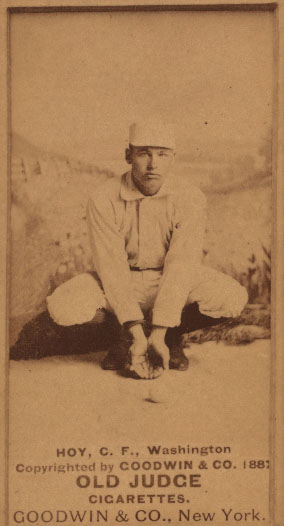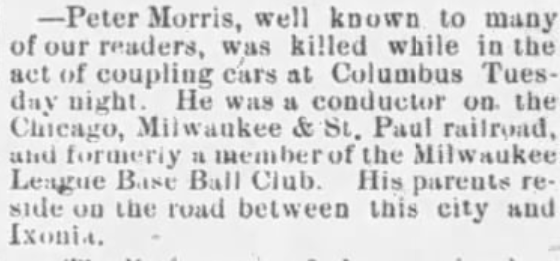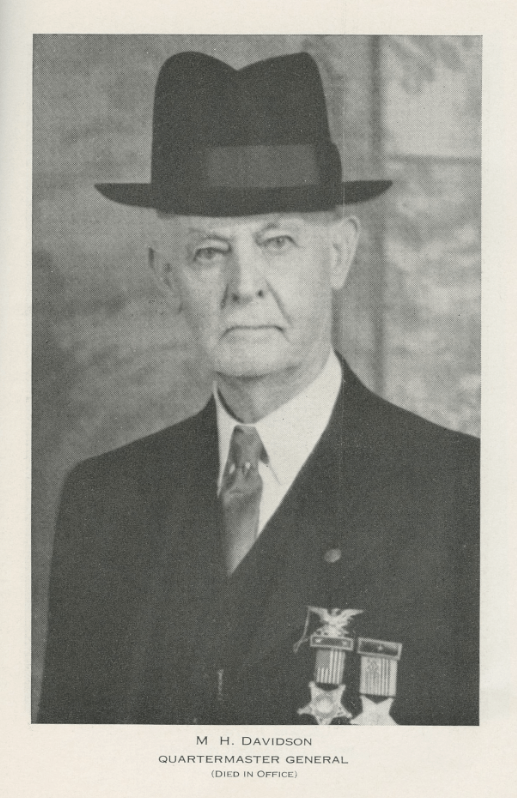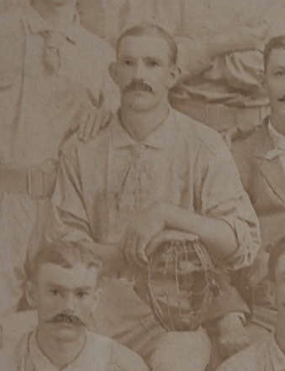The answer to that long fought debate as to which baseball player was the best violinist of all time is this man, Sonny Senerchia.
 Born in Newark on 06 April 1929, Emanuel Robert Senerchia was destined to follow in the footsteps of his grandfather and father, both of whom were accomplished musicians and concert violinists. His grandfather was a maestro at the Milan (Italy) School of Music, an uncle was a successful composer (two other uncles were also musicians), and his father was a violinist with the Andre Kostalanetz Orchestra at the time Sonny made it to the Pittsburgh Pirates as a third baseman. Sonny started learning from his father at the age of five, and by ten he was good enough to perform at Carnegie Hall. He studied under Maxmillian Pilzer, the former concert master of the New York Philharmonic Symphony Orchestra. In time, Sonny would be named a member of the National Youth Symphony Orchestra – at the age of twelve.
Born in Newark on 06 April 1929, Emanuel Robert Senerchia was destined to follow in the footsteps of his grandfather and father, both of whom were accomplished musicians and concert violinists. His grandfather was a maestro at the Milan (Italy) School of Music, an uncle was a successful composer (two other uncles were also musicians), and his father was a violinist with the Andre Kostalanetz Orchestra at the time Sonny made it to the Pittsburgh Pirates as a third baseman. Sonny started learning from his father at the age of five, and by ten he was good enough to perform at Carnegie Hall. He studied under Maxmillian Pilzer, the former concert master of the New York Philharmonic Symphony Orchestra. In time, Sonny would be named a member of the National Youth Symphony Orchestra – at the age of twelve.
About that time, Manny (as he was called by his family) discovered sports. At Barringer High School, Senerchia earned three letters playing football (quarterback and punter) and two more playing baseball (shortstop and pitcher). Barringer won the Newark City League football title in 1946, a season that saw only one loss. As a senior, Senerchia was named to the All-City 11. However, baseball was becoming equally important to Sonny as the violin.
Senerchia said his parents didn’t understand baseball. In 1952, when they saw Sonny homer off of Hoyt Wilhelm in the Polo Grounds, they didn’t know why people were screaming or applauding, or even why he had to run around and touch all the bases. “My father,” he told an Asbury Park Press reporter, “had only one idea: he wanted me to become a concert violinist, like himself. And until I got to high school, I wanted it, too. I really loved it. When I quit playing the violin to concentrate on sports, he told my mother I took 10 years off his life.” Eventually, they came to understand and appreciate their son’s love of baseball.
Heading to college, Senerchia played baseball at Montclair State College for three years under Coach Bill Dioguardi. Senerchia contributed at third base, the outfield, and on the mound for a team that once went 23 – 2, including victories over nearby schools St. John’s, Fordham, Long Island University, CCNY, Rider, and Upsala. During the summers, Dioguardi helped Senerchia get an opportunity to play amateur ball with Keane, N.H., in the Northern League for two seasons.
Things changed for Senerchia during his junior year at Montclair. A close friend, who just signed with the Boston Red Sox, described to him what being a major league player was like. “It sounded pretty good,” Senerchia recalled. “In fact, it was too good to pass up. My love for baseball was second only to the violin.”
Scouts from the major leagues watched the hustling infielder with a strong throwing arm and a good deal of natural power. Branch Rickey, then the general manager of the Pirates, made him the best offer – a $10,000 signing bonus. So, Sonny signed a contract with the Pittsburgh Pirates. He also received offers from the Chicago White Sox, the New York Giants, and Brooklyn Dodgers.
Senerchia’s earnest and hustling play got attention from the writers, fans, and Pittsburgh brass. Sent initially to a Class B team in Burlington, North Carolina, Senerchia established himself quickly as a legitimate prospect. The Burlington Daily Times-News wrote:
“…Senerchia, top hitter on the club, was regarded by officials of the circuit and fans as one of the finest third basemen in the league and one of the top prospects on the club. He was the only Bur-Gra (Burlington-Graham) batter hitting over .300 and was by far the most popular player on the club from the fans standpoint. The youthful infielder had a brilliant fielding record. His arm was regarded as one of the best in the circuit and at the plate he revealed terrific wrist power.”
At the end of the season, Richard Minor wrote:
“Awarding of Bur-Gra’s ‘most popular player’ prize, a valuable watch, to Sonny Senerchia should go down as a lesson to other players on the importance of doing their best at all times, even on a losing club.
“Senerchia came here as a rookie fresh out of college, and Pittsburgh officials were not sure he was ready for class B ball. But, he turned out to be a real spark plug, played that base like a veteran, and batted well enough to earn a promotion all the way to Pittsburgh, where he is doing a fine job at third base.
“There wasn’t much question in our mind as to who would win the prize. Ron Necciai had to have consideration, but Senerchia won out because he played every night, and added fire to a club that was largely dead on its feet much of the time. Senerchia will probably land back in the minor leagues somewhere next year, and if that is the case he will find a warm welcome awaiting him in Burlington and Graham.”
Senerchia wasn’t around to collect his watch. He had already been called up to the majors. (It was mailed to him.)
In 1952, the Pirates weren’t very good. Ralph Kiner was banging out homers and Joe Garagiola was honing his storytelling skills, but with a team about to fall 50 games below .500, Rickey brought up all of his prospects to see who might stick. Young players like Dick Groat, Ron Necciai, Lee Walls and Sonny Senerchia were put in the lineup and told to do their best.
In fact, Necciai – famous for a 27 strikeout game in the minors – got his only win in the majors thanks to homers by Kiner and Senerchia, his first major league shot. It came in the first game of a doubleheader against the Boston Braves. Speaking of future broadcasters, Senerchia’s first long ball came off of future Braves play-by-play man, Ernie Johnson. By the end of the season, Senerchia had three homers in his 100 major league at bats – 22 hits and 21 strikeouts. The high strikeout count belied his first impressions, told to Les Biederman of the Pittsburgh Press. “In the minors, the pitchers try to strike out every batter and they’re plenty wild,” Sonny said. “But up here they shoot for the corners and try to make you hit the ball somewhere.”

Sent back to the minors for the 1953 season, Senerchia played pretty well at AA New Orleans but wound up taking a tour of Class B level cities, including Waco and a return trip to Burlington-Graham, too. He finished strong, through, and was moved to a AA Houston in the Texas League for 1954. There, Senerchia started off strong during spring training and felt like he was going back to Pittsburgh soon when disaster struck.
Playing against Burlington in an exhibition game, and on the heels of a hot homer streak, pitcher Don Watkins fired a ball that hit Senerchia in his unprotected forehead. The pitch knocked Senerchia out cold – he would be unconscious for nearly an hour and groggy for a couple of days. Fortunately, he survived without any fractures or damage to his brain. However, he’d be out for several games and he suffered from headaches for most of the rest of his baseball career.
When Senerchia was hit, not all teams were enforcing the use of batting helmets. Joe Kelly, writing for the Lubbock Avalanche-Journal, summarized the position favoring helmets.
“Some fans may be inclined to laugh at the plastic helmet caps that the Hubbers are wearing this year, but the players aren’t. They’ve already seen where they were good for them, although that doesn’t mean all of them like the semi-flexible lids.
“Three players were saved by them at Huntsville when they were beaned. It shakes up a player, but it saves a concussion or a more serious injury. It’s mandatory in the Pittsburgh chain this year.
“While Lubbock was training at Huntsville, Sonny Senerchia of Houston was beaned, received a concussion and was, for a while, feared to be dying. The accident could have been averted if he had been wearing a helmet.
“Actually the caps are light, have air holes and there is a foam rubber ring around the inside to keep them on the head. It’s a noticeable change at first, but everyone gets used to them after a while. It’s a wise precaution.”
Years later, Senerchia would look back and say that the Houston squad was probably the best team on which he was playing. Teammates included Ken Boyer, Don Blasingame, Larry Jackson, and Luis Arroyo. Houston won the Texas League and later the Dixie Series when the season was over. But for Senerchia, it was the beginning of a change to his baseball career path. He was changing positions.
No longer thought to be a prospect for third base or the outfield and beguiled by headaches, some smart baseball person noticed that Senerchia could help with his strong throwing arm. Starting in 1955, Sonny was now a pitcher. He began pitching at A Level Allentown in the Eastern League where he went 8 – 8 with a solid 2.75 earned run average despite not having a breaking ball or great control. At the end of the season, he was a throw in when the Redbirds and Redlegs made a trade – Sonny was now the property of the Reds. At first, Senerchia was assigned to Seattle in the Pacific Coast League, but he wound up pitching for Nashville instead.

The Reds liked his arm, but not his lack of control. A scouting report from pitching coach Tom Ferrick said his live fastball moved when thrown overhand and sank when thrown sidearmed. However, he wasn’t ready for the majors. He couldn’t be depended on to throw strikes. In fact, he couldn’t find the plate at all in 1956 – walking eleven guys in three innings. The harder he tried, the wilder he got. Reds management dispatched Senerchia to A Level Savannah where he finished the season with a lousy record but a respectable ERA. The following season, the Reds moved him up to AA Louisville but decided after a few weeks to move Senerchia to Monterray, Mexico. Now, the Reds didn’t like his control AND his attitude. Senerchia wanted nothing to do with a move to Mexico – so Cincinnati suspended Senerchia for the remainder of the season.
Senerchia went back to school – he got his masters degree in music and prepared to switch careers back to music and teaching. Except he got the itch to pitch one more time. Senerchia explained it this way:
“I’ve had this conflict all my life between music and sports. While playing baseball professionally, I would miss music terribly. Then, in the off-season, I couldn’t wait to get to Florida for spring training.”
Dick Sisler, who managed the Nashville Vols, gave Senerchia that chance, and the kid who hadn’t touched a baseball in eight or nine months looked solid right away. Knowing about his control problems, Sisler warmed to his effort and attitude.
“There’s always the necessity of getting it over the plate” Sisler noted, “but Sonny didn’t have bad control out there today. His fastball zooms and he had a good curve, which I hadn’t been told about before.
“I’ve heard a lot about him having a bad attitude,” Sisler added, “but he hasn’t shown it to me here. In fact, his good attitude has been one of the outstanding things about his work so far. There isn’t the slightest doubt that he could help us if he continues to throw with as much control as he did today.”
Senerchia didn’t stick. He pitched a season with Sioux City in the Western League and called it a career. He went home and picked up his violin.
When he began playing the violin seriously again he found at first it “seemed like a toothpick” in his hands. “I had to put a lot of time into music when I came back,” Senerchia said. “On a lot of jobs, I was competing with men who never left music. There was a tremendous amount of tension and pressure – just like in baseball.”
He never touched the violin during the baseball season, and didn’t get much chance to play it in the off-season either. “I would play it on occasion” he recalled, “but only to fill a need. It was difficult anyway, because at the end of each season, I’d have calluses at the bottom of each finger and my joints would be very tight – and you have to be loose to play the violin.”
Fortunately, his hands still worked. Despite many baseball injuries, he never hurt his left hand – the hand he used to “work the technique” while playing violin. As he told the Asbury Park Press, “I broke the middle finger of my right hand once, but that’s the bowing hand, and it doesn’t matter as much. With the left hand, you need every finger.”
His first jobs weren’t in music – he had much to learn. And teach. So he taught physical education at the high school and later college levels and coached the school’s baseball teams. While teaching physical education at Livingston High School he met his future wife, an English teacher named Dorothy Siegel and over time they had three children, Susan, Steve and Kenneth. He left the high school world to coach at Monmouth State, teaching and coaching. The rest of his time he spent honing his music skills.
 Senerchia played in several recitals, including spots as a featured soloist. In time he was named concert master at the Bloomfield Philharmonic Symphony Orchestra, and won a scholarship to study violin at the Manhattan School of Music under Raphael Bronstein. In the late 1960s, he returned to the public school system and developed an orchestra for middle and high school students while teaching at Toms River High School.
Senerchia played in several recitals, including spots as a featured soloist. In time he was named concert master at the Bloomfield Philharmonic Symphony Orchestra, and won a scholarship to study violin at the Manhattan School of Music under Raphael Bronstein. In the late 1960s, he returned to the public school system and developed an orchestra for middle and high school students while teaching at Toms River High School.
Did Senerchia make the right decision while a college student?
“It’s a funny thing,” Mr. Senerchia once mused. “I often wonder what would have happened if I’d continued with the violin. I can play in an orchestra now, but I always wonder how far I could have gone as a soloist.”
As he continued to play and improve, Senerchia played for the Garden State Philharmonic and the State Philharmonic and the State Orchestra of New Jersey, and on a freelance basis with other groups, like the New Jersey Opera Company and the New Jersey Ballet Company.
Senerchia also played with some famous entertainers, like Pearl Bailey and Jack Benny. “It was an act where Benny stood up and did some solo violin cadenzas,” Senerchia said, “and the concert master and I, in turn, got up and broke in just as he reached a difficult place in the music. Then he told us to get off the stage.
“At the end, Benny called us back and had us take a bow. It was a real comedy act, and it got quite a hand.”
Life wasn’t all baseball and music. In his later years, Senerchia raced sports cars in the SCCA and he became a pilot. Okay – there was still baseball and music. He started playing other instruments in jazz groups – Senerchia worked the clarinet, saxophone, flute, and piano. He played softball on a ridiculously competitive team past his 70th birthday.
On November 1, 2003, Senerchia was riding his motorcycle in Freehold, New Jersey when he was involved in a nasty accident. In an instant, a man who constantly expanded his life and skills and knowledge and shared it with others was gone.
One wonders if Senerchia sold either his baseball career or his musical career short by not focusing on one thing. Maybe – but for Senerchia, he was able to live well in both worlds. Branch Rickey said it best when he observed that the young third baseman had “the equipment of a ballplayer but the temperament of a musician.”
Note: The original post, dated 4/6/2017, listed Senerchia’s birth year as 1931 and I got a comment from Mr. Senerchia’s wife (below) saying that his actual birthdate was 1929. I have since edited this essay for publication with the Society for American Baseball Research (SABR) and am editing this essay now (7 July 2022). Not only can I reference Dorothy’s note below, but I found a Social Security Index noting his 1929 birthday and saw the 1930 US Census that shows Sonny was born in 1929 (he appears in the Census as 1 year old). I will also take this up with the fine people at Baseball-Reference.com. – Paul
Sources:
(Web)
http://www.baseball-reference.com/register/player.fcgi?id=senerc001ema
http://www.retrosheet.org/boxesetc/S/Psenes101.htm
(Newspapers)
“Pirates Bow to Pats, 2-1; Senerchia Goes to Pittsburgh”, Burlington (NC) Daily Times-News, 19 August 1952, Sports-Page 2.
Hernon, Jack. “Roamin’ Around”, Pittsburgh Post-Gazette, 21 August 1952, Page 19.
“Bucs Split Pair as Necciai Cops First Victory”, Indiana Gazette, 25 August 1952, Page 11.
Biederman, Les. “The Scoreboard”, Pittsburgh Press, 28 August 1952, Page 37.
Minor, Richard, “This Sporting World”, Burlington (NC) Daily Times-News, 03 September 1952, Page 14.
“Sent to New Orleans”, The Bridgewater (CT) Courier-News, 07 April 1953, Page 16.
“Pirates Lose 3 Prospects at Draft Meeting”, Pittsburgh Post Gazette, 02 December 1953, Page 20.
“Shaughnessy Slaps Charge On All League, Club Passes”, The Ottawa Journal, 11 Feb 1954, Page 26.
“Sonny Senerchia Seriously Injured By Pitched Ball”, Danville (VA) Bee, 07 April 1954, Page 10.
Kelly, Joe. “Between the Lines”, Lubbock Avalanche-Journal, 18 April 1954, Page 17.
“Johnstown Blanked by Senerchia, 10 – 0”, Binghamton Press and Sun-Bulletin, 03 July 1955, Page 32.
“Cards, Redlegs Swap Lawrence, Collum”, Albuquerque Journal, 01 February 1956, Page 18.
Smith, Lou. “Sport Sparks”, Cincinnati Enquirer, 25 March 1956, Page 54.
“Senerchia Optioned”, Pittsburgh Press, 29 March 1956, Page 22.
Smith, Lou. “Lou Smith’s Notes”, Cincinnati Enquirer, 10 September 1956, Page 39.
“Nashvols Sell Senerchia”, Nashville Tennessean, 19 March 1957, Page 15.
Williams, F. M. “Vols’ Senerchia Shines in Reclamation Stint”, Nashville Tennessean, 16 March 1958, Page 30.
Sullivan, Jim. “Then and Now: ‘Sonny’ Senerchia Played For the Pirates in 1952”, Asbury Park Press, 19 April 1964, Page 48.
“Former Pirate Now Plays to Crowds in Concert Hall”, Asbury Park Press, 18 January 1968, Page 18.
“Ex-Pirate To Perform In Concert”, Asbury Park Press, 06 January 1970, Page 18.
Reiter, Ed. “Beethoven vs. Baseball: Senerchia Torn Between 2 Worlds”, Asbury Park Press, 05 March 1972, Page 72.
Obituary: Emanuel Robert Senerchia, Asbury Park Press, 07 November 2003, Page 19.




Leave a reply to Paul Proia Cancel reply